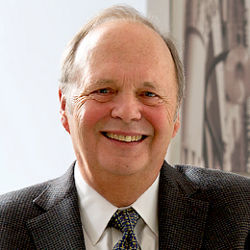
ACM held a strategic planning retreat last November. The motivation for the retreat was the realization that while ACM is a large, financially sound, and increasingly relevant educational and scientific computing society, the ecosystem that supports scholarly and professional societies is undergoing rapid change, and this change is creating significant challenges.
The retreat involved an in-depth look at membership, publications, and conferences/SIGs. Over two days, ideas regarding future ACM directions emerged within each of these areas, ideas emerged that crosscut multiple areas, and ideas emerged at varying levels of detail.
Membership. What surfaced in the membership discussion as a primary new direction to consider is understanding and focusing on ACM’s reach and doing more with the large segment of the computing community "touched" by ACM in one form or another. Back-of-the-envelope estimates suggest the size of this community is on the order of 3.4 million individuals … individuals who use ACM and/or contribute to ACM, but are not members. The community includes: SIG-only members, individual subscribers to publications, admins/librarians, institutional users of ACM’s Digital Library, article purchasers, Web account holders, Listserv subscribers, webinar registrants, conference attendees, chapter-only members, website visitors, authors, conference committees, reviewers and PC members, and social media followers.
This broad ACM community has a varying level of engagement with ACM. One portion is primarily users of ACM content (for example, website visitors, webinar registrants, social media followers), while others actually contribute to ACM’s mission (for example, authors, reviewers, PC members, conference committees). There was a desire to: 1) understand and capture/record who these individuals are; 2) recognize them more formally; and 3) give something back—particularly to those who contribute to ACM’s mission.
Publications. Over the two days of the retreat, we reviewed multiple dimensions of the ACM Publications program. In the discussion, there was general agreement that for the foreseeable future it was in ACM’s best interests to see Publications generate a surplus that enables a wide range of ACM activities. That said, there was significant discussion of the challenges facing the Publications business.
The bulk of these challenges stem from the open access (OA) movement and its potential impact on subscription-based publishing. To date, ACM has moved to be more in line with OA while continuing to grow DL revenue. While we agreed ACM can expect substantial DL revenue in the short term, the rate of DL revenue growth will likely decline, and the long-term revenue picture for the DL is unclear.
Given these points and the related retreat discussion, there are short-term and long-term issues to explore and address. In the short run, we need to improve the current publications operations, move further with OA publishing within ACM, and critically review the current portfolio of publications.
Regarding the longer run, our discussion centered on issues surrounding the future of scientific publishing in general. The issues at the core of this discussion were: 1) journal vs. conference publishing; 2) a vision of what published content will look like in the future; and 3) a future vision for the DL in terms of features, functions, and business models.
Conferences and Technical Communities (SIGs). From the beginning, ACM SIGs have had significant technical and financial autonomy within ACM. With this autonomy has come significant responsibility for fostering strong communities. Over the past 50 years, this model has proved incredibly successful. SIGs dominate the technical landscape of ACM.
In moving a relatively healthy SIG structure forward, the retreat identified a handful of issues to explore and address. First and foremost was to consider further repositioning conferences within the publishing culture of computing research. There is tension with the community’s success in establishing conferences as a unique and major publishing venue for computing. Multiple issues need further in-depth consideration: the proliferation of conferences and the trend toward a publishing culture of incremental results; the demise of workshops as a venue for informal presentation and discussion of research; the role of journal vs. conference publishing. The second area of discussion was focused on fostering conferences outside the SIG structure.
In addition to the topics noted here, there was discussion regarding three major cross-cutting issues:
- Community: build and support a sense of "community’ in everything we do,
- Quality: ensure a high level of quality and relevance across everything we do, and
- Practitioners: explicitly consider reaching and serving practitioners in everything we do.
A lot came out of the ACM retreat. There are now committees and task forces established to address the main outcomes. The goal of the new administration is to see these committees complete their work and, as a result, see a significant change in how ACM addresses membership, publications, conferences, and technical communities while maintaining quality, building a broad sense of community, and serving practitioners.



Join the Discussion (0)
Become a Member or Sign In to Post a Comment